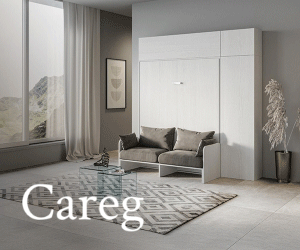Bruno Mathsson was born on January 13, 1907, in a small town in Sweden and is considered one of the pioneers of modern Swedish furniture design. As the son of a cabinetmaker and a descendant of a generation of carpenters, he gained a profound knowledge of wood and its processing techniques and qualities from an early age.
In 1930, he put this knowledge into practice when commissioned to design a chair for the hospital in his town, known as the “Grasshopper chair.” The entirely innovative idea was to create a seat without traditional upholstery, using woven fabric straps supported by a solid birch frame—a technique he employed in many other pieces.
Grasshopper chair, 1930.

The Grasshopper chair gained great popularity in 1934 with the introduction of the “Eva” chair. A more refined and balanced version of the Grasshopper chair, “Eva” drew strong inspiration from the work of Alvar Aalto and became part of a collection consisting of armchairs, ottomans, and sofas, which achieved significant sales success throughout his career and are still sought after by collectors today.
Eva Chair, 1934

Like the Finnish designer Alvar Aalto, Mathsson was among the first to embrace soft and organic forms in furniture, in contrast to the style of the time. The technique of bending laminated wood allowed for the introduction of ergonomic lines and profiles of unsurpassed elegance. For the designer, seating should follow the shape of the human body, and its components should adapt as closely as possible to this idea.
Mathsson also designed for practicality and adaptability, as demonstrated by the “Maria” table from 1936. A folding table with gate legs and hinged doors that allow it to extend from 22 cm when closed to 280 cm when fully extended.
Maria Table, 1936.

Maria Table, closed and partially open, 1936.

In 1942, he introduced the “Pernilla” collection, comprising an armchair, ottoman, and chaise longue, which became one of the immediately recognizable examples of 20th-century design.
Pernilla Armchair, 1942.

Chaise Longue Pernilla, 1942.

From the mid-1940s to the 1950s, Mathsson focused on architecture and the design of houses with insulated glass walls and heated floors— innovative construction techniques that surpassed traditional Swedish residential design characterized by abundant use of wooden cladding.
He returned to furniture in the 1960s, employing entirely new materials and production techniques such as tubular metal, crafted with the same mastery as wood. One of the most famous seats from this period is the “Jetson” armchair from 1969, which continues to be produced for the international market by the Danish company DUX.
Jetson Armchair, 1969, produced by DUX.

His collaboration with the mathematician Piet Hein gave birth to the “Super-Elliptical” table, a laminated top resting on legs created from multiple thin metal tubular cables, giving the impression that the table is floating in the air. A milestone in his mature work, it is still produced by Fritz Hansen.
Super-Elliptical Table, 1968, produced by Fritz Hansen.

Despite Mathsson being a less-known designer compared to other famous figures in Danish design, he managed to combine simplicity, beauty, and functionality in all his projects in a way rarely surpassed in the decades that followed.

In the cover image, portrait of Bruno Mathsson.



























